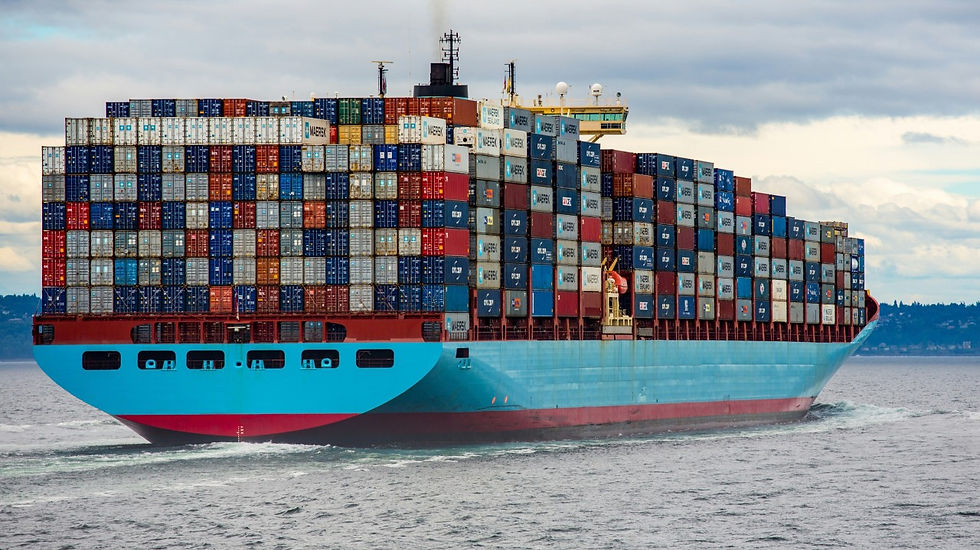How Tariffs and Trade Wars Are Reshaping Global Supply Chains
- Ben Spitz
- Apr 1
- 3 min read

How Tariffs and Trade Wars Are Reshaping Global Supply Chains
In the world of logistics and supply chain management, one thing has become crystal clear: geopolitics now matter as much as economics.
Over the past year, we've seen an aggressive resurgence of tariffs and trade restrictions that are rewriting the playbook for how companies move goods across borders. From the escalating U.S.-China tensions to new duties on Mexican imports, the logistics industry is caught in the crossfire.
The Freight Crisis Behind Tariffs

Tariffs might be aimed at protecting domestic industries, but they often hit supply chains the hardest.
Importers are front-loading shipments to beat tariff hikes, leading to massive spikes in container volumes. In February 2025 alone, U.S. import volume from China jumped 7.9% — a direct result of businesses rushing to get ahead of new tariff deadlines.
This “pull-forward” behavior is straining ports, creating border delays, and inflating freight costs. The Shanghai Container Freight Index doubled by mid-2024, and even now, global freight rates remain 115% above pre-pandemic norms.
Bottom line: tariffs aren’t just a tax — they’re a bottleneck.
Inventory Pile-Ups and Trucking Pain

The ripple effect? Companies are padding inventory to shield against volatility, tying up cash in warehouses that are already 7% more expensive than last year. Meanwhile, the freight market is still recovering from a prior tariff-fueled downturn. Remember the 2019 “freight recession”? Thousands of truckers went bankrupt because of unstable volumes. We’re seeing echoes of that now.
The Great Supply Chain Migration
Faced with rising costs from China, companies are adjusting sourcing strategies — but not always in the ways you'd expect.
Vietnam and Mexico have become major beneficiaries. Vietnam’s trade surplus with the U.S. hit a record $123 billion in 2024, and Mexican exports are at all-time highs. But here’s the kicker: many of these "new" suppliers are still backed by Chinese capital. In other words, the supply chain hasn’t really moved — it’s just been relabeled.
This illusion of diversification hides real risk. Vietnam’s own imports from China make up 33% of its total, meaning indirect dependencies remain strong. So while companies feel like they’re mitigating exposure, they're still tethered to the same old vulnerabilities.
Reshoring, Friend-shoring — or Just More Complexity?

Everyone’s talking about reshoring and nearshoring, but it’s not as simple as moving operations home.
Yes, over 287,000 U.S. jobs were announced through reshoring or foreign direct investment in 2023. But actual manufacturing employment only grew 0.6%. That’s a gap that reveals the real challenge: it's expensive and slow to rebuild domestic supply chains.
To cope, some businesses are turning to Foreign Trade Zones (FTZs) to delay or avoid tariffs. Others are adopting friend-shoring strategies — sourcing from politically aligned countries — to create a more stable network. The big question is whether this fragmentation leads to greater resilience or just more overhead and confusion.
What’s the Path Forward?
Tariffs are changing supply chains in ways that will last far beyond any single trade deal. While they’re meant to encourage domestic production and reduce reliance on geopolitical rivals, they often do so at a steep price.
Higher logistics costs
Longer lead times
More complexity in sourcing and compliance
In this environment, agility and strategic planning are everything. Companies that adapt quickly
— by diversifying sourcing, optimizing their logistics networks, and leveraging new technologies
— will come out on top.
But make no mistake: the days of “just-in-time” global efficiency are behind us. Welcome to the era of “just-in-case” supply chains.
.png)


Amazing, great insight